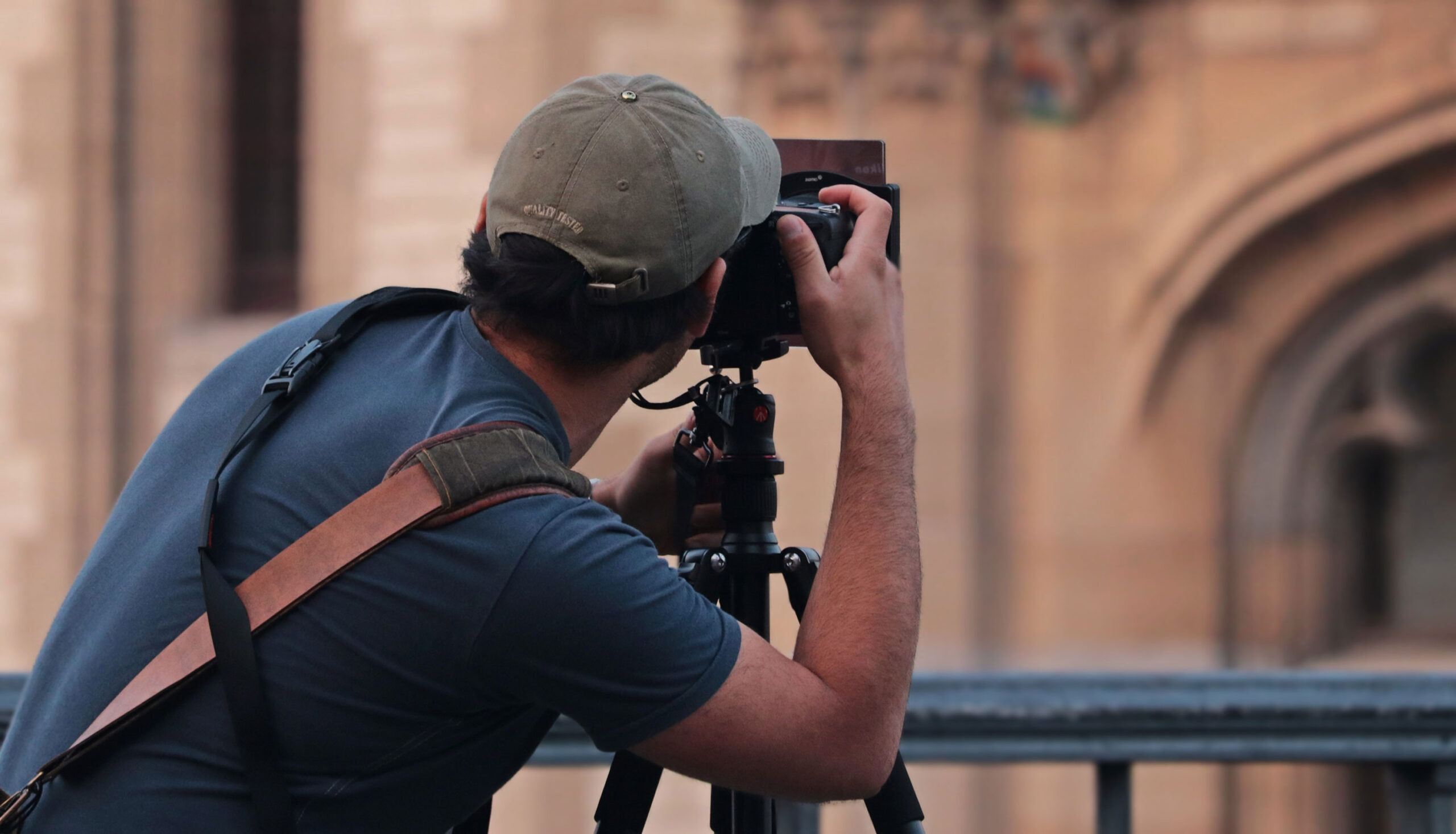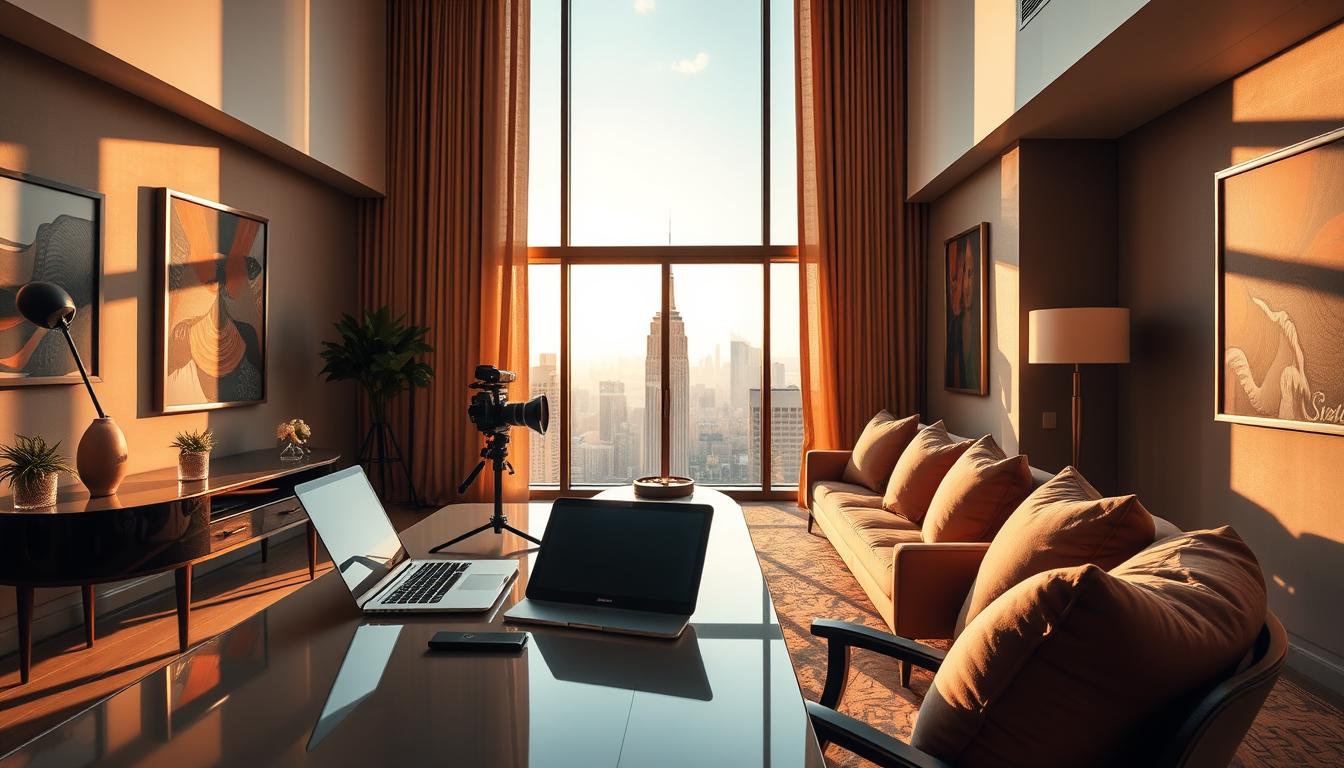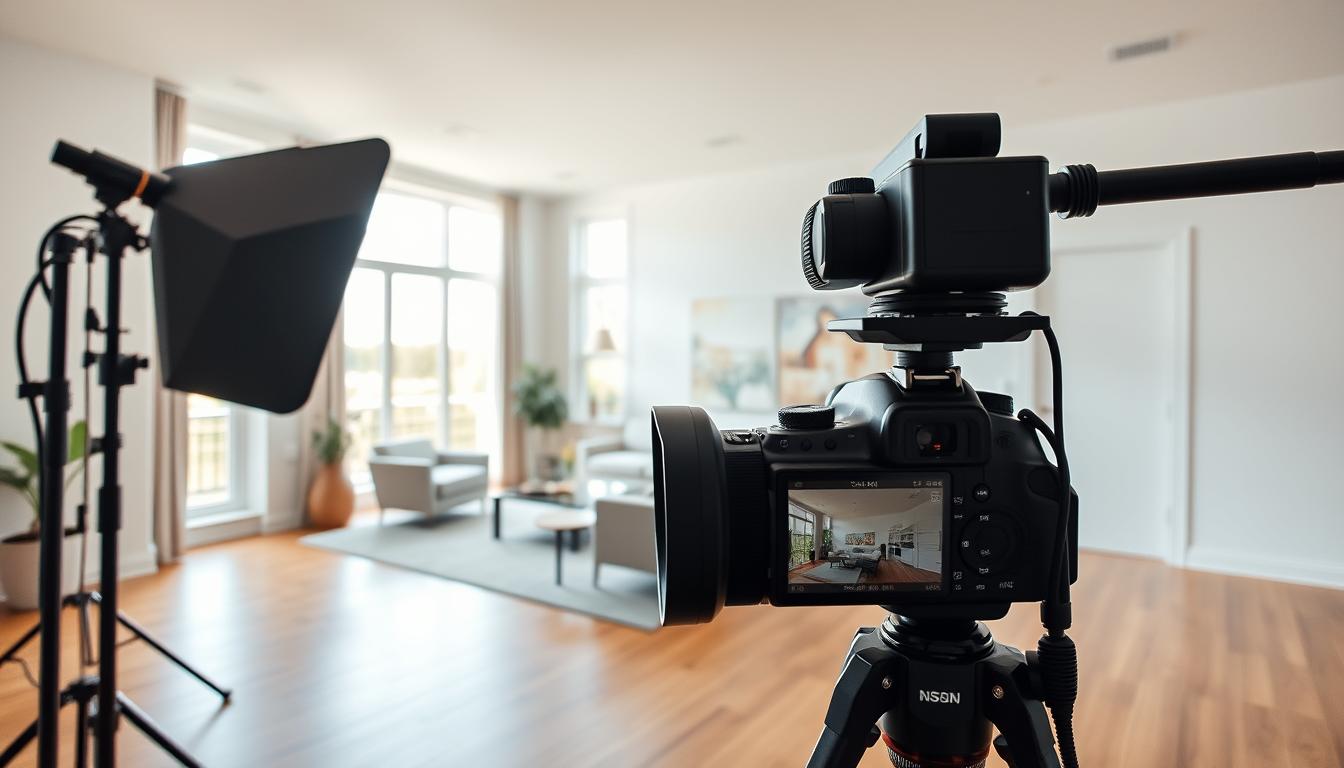Did you know that homes with good photos sell 32% faster? Taking nice pictures of houses helps real estate agents and sellers. Good photos make a house look more attractive and bring in more buyers.
Getting started in real estate photography is easier than you might think. With the right camera, some practice, and creativity, anyone can do it. Learn how to use light, take good shots, and make rooms look nice. Create a collection of your best photos to show people what you can do.
Talking to local real estate agents can help you find work. Real estate photography is a fun job where you can get better at taking pictures while helping people sell their homes quickly.
Build a Portfolio

Showcase Your Best Work
A well-crafted portfolio is crucial for aspiring real estate photographers. Begin by curating a selection of your finest images that effectively showcase your expertise. Aim to include a range of property types, such as residential homes, commercial buildings, and distinctive features like landscaped gardens. This diverse representation highlights your adaptability and skill set.
Regularly updating your portfolio: To maintain a contemporary and engaging portfolio, consistently update your images as your photography skills advance. Swap out older photographs with more recent ones to reflect your growth and keep your work relevant. Potential clients notice when portfolios reflect current work. An updated portfolio signals professionalism and commitment to quality.
Use Online Platforms
Promoting your photography online is essential for success. Increase your exposure and build stronger relationships with prospective customers by making good use of social media sites like Facebook, Instagram, and Pinterest. The benefits of starting a personal website or blog are numerous. You can use it as a designated area to present your portfolio in an organized fashion. Additionally, it offers opportunities to share supplementary content, including photography insights or project case studies. Implementing Search Engine Optimization (SEO) strategies is vital for enhancing your online presence. Incorporating pertinent keywords related to real estate photography on your website is essential for enhancing visibility in search engine results. This strategic approach boosts the chances of attracting prospective clients. Additionally, regularly refreshing your content can lead to notable improvements in your SEO performance.
Gather Client Testimonials
Requesting feedback from satisfied clients is vital for building credibility. Positive testimonials greatly influence potential clients. When clients are satisfied, request a brief review of your services.
Display testimonials effectively on your website or social media profiles. Consider creating a dedicated section for client reviews on your site. Highlighting these endorsements builds trust with new clients.
Incorporate testimonials into marketing materials as well. They can serve as powerful tools in brochures or presentations. Real-life experiences resonate deeply with potential clients.
Marketing and Networking

Create a Strong Brand
A unique brand identity sets you apart. It helps clients recognize your work instantly. Key elements include a logo, a catchy tagline, and a consistent color scheme. These components should reflect your style and approach to real estate photography.
Consistency is crucial. Use the same branding across all marketing materials. Establishing a robust brand identity is essential in real estate photography, encompassing your website, business cards, and social media accounts. A well-crafted brand fosters trust and enhances client recall, making it easier for potential customers to recognize your services.
Leverage Social Media
Platforms such as Instagram and Facebook serve as excellent avenues for displaying your portfolio. By presenting high-quality photographs, you can draw the attention of prospective clients. To enhance your reach, incorporate relevant hashtags related to real estate and photography.
Engaging with potential clients is essential. Respond to comments and messages promptly. To foster a personal connection, consider sharing behind-the-scenes content. Consistently updating your audience not only keeps them engaged but also informs them about the range of services you offer.
Join Industry Groups
Joining photography and real estate associations offers many benefits. These groups provide networking opportunities that can lead to new clients. You can learn from peers who share similar interests.
Staying updated with the latest industry developments offers a significant benefit. Understanding current trends is essential for staying competitive in the field. Various organizations offer workshops aimed at enhancing your photography techniques.




